At last we are back in England, I mean India. Ah! I'm sure I just made someone angry. Let the hate mail begin.
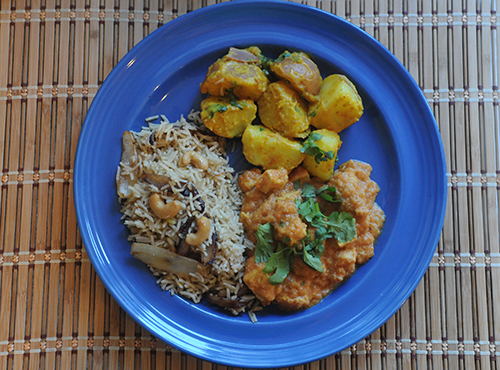 |
Now that we're in the foothills, most of the Indian food we eat is the stuff I make at home. We do have a good Indian restaurant here, but we can't afford to take all six of us there. So it's homemade tikka masala and butter chicken for us--and occasional blog nights, of course.
This isn't the first time I've done Indian food for Travel by Stove, and it's probably about the millionth time I've done Indian food of any kind. It is fun to see all the regional differences, though, since I usually just cook restaurant favorites on non-blog nights, which may or may not even be authentically Indian.
This week we're doing food from Kashmir, which is in the northwest of the Indian subcontinent. The region of Kashmir is actually divided between India, Pakistan and China, but for this post we're sticking strictly with the Indian part.
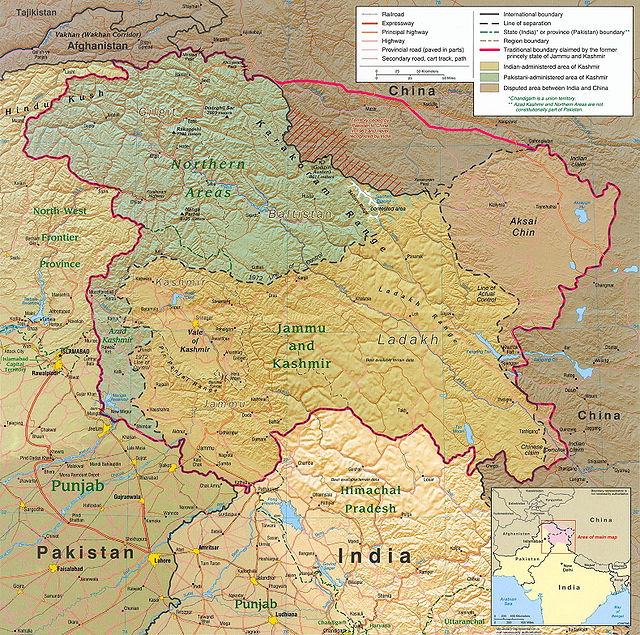 |
Present day Kashmir was once a lake--its name actually comes from the term Kaashmir, which means "a land desiccated from water." The economy of this region is agriculturally-based--rice is grown there, along with wheat, barely and many different types of fruits and vegetables. There's some tourism, too, and many of the locals make a living selling handicrafts to visitors. Politically, Kashmir has been merged with another region to form the Indian State of Jammu and Kashmir. Here's an interesting factoid for you: the region actually has two capitals: Jammu in the winter and Srinagar in the summer. If only we could do that in California: San Diego in the winter, Crescent City in the summer. Sacramento is too hot to be the capital in the summer and too boring to be the capital in the winter. Ah! More hate mail.
 | |
Kashmiri food is heavily meat-based. Or, more accurately, heavily mutton-based. Did you know that there are 30 different varieties of mutton in Kashmiri cuisine? I'm not even sure how that's possible. Is it like, grass-fed mutton and corn-fed mutton and old mutton and castrated mutton or what?
I did not pick a mutton recipe, at least not this week. Here's what I did pick:
Murgh Masala
(this recipe comes from Indian Khana)
- 1 lb chicken, chopped into bite-sized pieces
- 2 1/2 large onions, roughly chopped
- 1/2 large onion, finely chopped
- 2 medium tomatoes, pureed
- 3 tbsp ghee
- 1 tbsp ginger-garlic paste
- 2 tap red chili powder
- 2 tsp coriander powder
- 1/2 tsp turmeric powder
- 2 Indian bay leaves
- 1/2 cup yogurt
- 1 cup water
- 1 tsp garam masala
- Salt to taste
- 2 tbsp chopped cilantro
- 15 cashew nuts, roasted
- 12 almonds, roasted
- 1 tbsp raisins
(this one is from Sanjeev Kapoor)
- 15 to 20 baby potatoes, boiled and halved with skin
- 1 1/2 tsp fennel seeds, crushed
- 2 tbsp oil
- 1/4 tsp asafetida
- 1/2 tsp turmeric powder
- Salt to taste
- 1 tsp coriander powder
- 1/2 tsp red chili powder
- 1/2 cup yogurt
- 2 tbsp cilantro, chopped
(this one is from Indif.com)
- 2 1/3 cups basmati rice
- 1 medium onion, sliced vertically
- 1 1/2 tsp cinnamon
- 1 1/2 tsp cardamom
- 1 1/2 tsp cloves, ground
- a pinch of turmeric powder
- 1 tbsp saffron*
- 2 tsp milk
- 1/4 cup walnuts, chopped
- 1/4 cup cashews, chopped
- 4 1/4 cups water
- 1/4 cup oil
- salt to taste
Alright let's start with the chicken. Start by roasting the almonds and cashews in a dry pan, stirring continuously until lightly browned. Let cool, then mix them with the raisins and transfer to a food processor. Process until the nuts are a fine powder.
Now heat 2 tsp of the ghee and fry the roughly chopped onion until golden. Let cool, then place in a food processor and pulse until you get a paste.
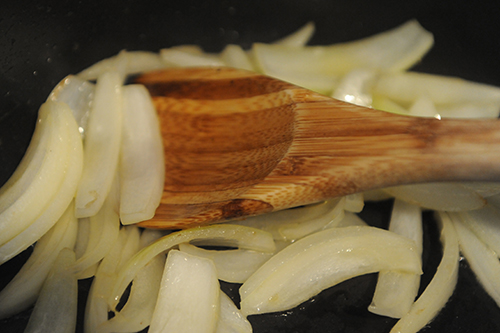 |
Now add the chicken and stir until covered with the onion mixture. Cover the pan and let cook for 10 minutes over a medium flame.
Add the tomato puree and stir, then cover again and cook for another 10 minutes. Add the yogurt and water and let simmer, uncovered, for two minutes or so. Now add the nut and raisin mixture and stir.
 |
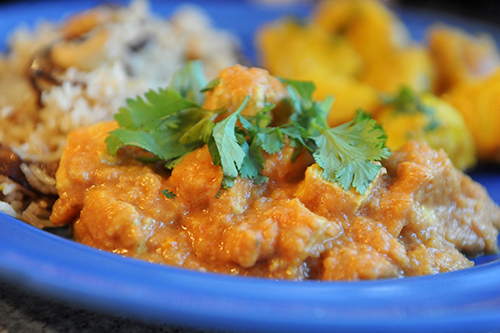 |
Heat the oil and add the asafetida and turmeric. Drop in the potatoes and stir for two or three minutes.
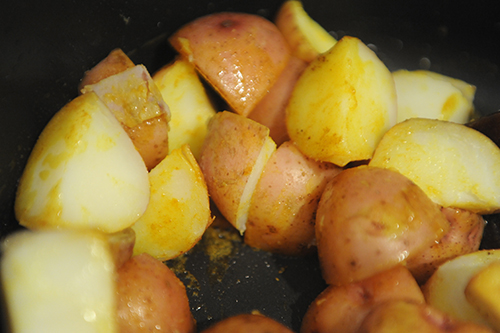 |
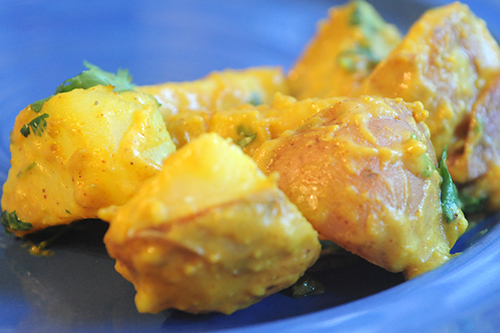 |
Wash the rice and soak for 20 minutes, then drain. Meanwhile fry the onions in the oil until golden brown. Remove and set aside. In the same pan, fry the spices and turmeric powder for a minute or two. Add the rice, stirring until coated with oil and seasonings.
Boil the water. Meanwhile, warm the milk, then use it to dissolve the saffron. Add to the rice, then add the hot water and stir well. Let simmer, covered, until all the liquid has been absorbed. Fluff the rice and garnish with the onions, walnuts and cashews.
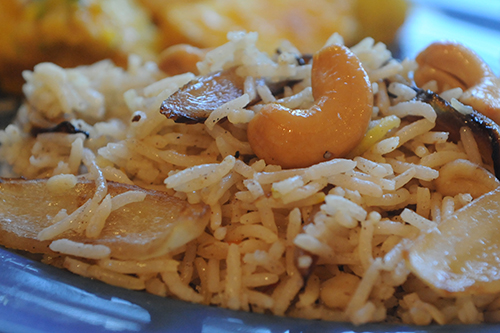 |
Oh and we liked the rice a lot too, basmati rice is good even when it's plain but I always love these simple recipes to spice it up a little.
So no surprises there, I knew I was going to enjoy Kashmiri food and I did. Martin did, too, though the kids were predictably lukewarm about the whole meal. Oh well, their opinion has never stopped me from adding stuff to the family cookbook, 'cause I am just mean that way.
Next week: Kashmir, Pakistan











0 comments:
Post a Comment